
























Some people are born knowing what they want to be when they grow up. They have a singular focus, a true passion, and the drive to get them there in the end. As for me? Not so much.
When I was around 7, I knew without a doubt that I wanted to be an artist. My incredible handling of colored pencils combined with my refined ability to draw horses of nearly perfect proportions had me pegged - in my mind -for the next Redlin (or maybe Lisa Frank). I even scored a sweet Easter basket prize for winning a kid’s coloring contest put on by the Avon Chamber of Commerce. My future was locked in — at least for a few years.
As my love for real horses outpaced my love for creating them on paper, my career aspirations shifted slightly. Around the age of 12, I had made up my mind—I had a bright future in horse training and boarding, like the place where we boarded my horse Buddy. I knew how I wanted my future barn constructed, and I had a solid business plan for boarding rates and hired help. I could think of nothing better than spending all my days with Buddy, trail riding and sharing carrots. I had life figured out.

All it took was one trimester of high school biology to dash my hopes of ever being a veterinarian. Science? Yeah, not my forte. Fortunately, around the age of 16, I had a new plan. Creativity was still a passion of mine, so I knew for sure I wanted to be a creative writer. I spent hours writing poems that rivaled Frost and Poe, and I didn’t have any doubt that my future was in telling stories and crafting tales. This, for sure, was my destiny.
When I was a senior in high school, I took my first psychology class. I was enthralled with the lessons on Pavlov and B.F. Skinner and the way that the mind could be manipulated given the right tools. How could I connect my love for creativity and my fascination with psychology? The answer was suddenly clear. Thus, a degree in marketing from St. Cloud State University was declared.
My incredible handling of colored pencils combined with my refined ability to draw horses of nearly perfect proportions had me pegged - in my mind - for the next Redlin (or maybe Lisa Frank).
There are certainly trends in my past career aspirations, but it was a bit of a bumpy road to get to where I am today. Rhoda Paurus, as you’ll see on page 36, didn’t have the same battles with figuring out her dream job - she knew from childhood that the floral arts were in her future. And it’s worked out pretty well for her.

Fast forward a few years to when I was about 14 and we moved Buddy home to Avon. It wasn’t long before I realized just how much work it is to have a single horse, let alone a barn full. I still really loved animals, though, so a trip to the drawing board led me to my next dream job: I was going to be a veterinarian. Spending all day with a wide variety of animals and helping them stay healthy sounded like heaven to me. Vet school, here I come!
As for me, I not only get to write every day, but I get to create graphics, strategize marketing initiatives, and I even have my sweet golden retriever at home to satisfy my pet cravings. Now, about those horse dreams… .
Until next time, Emily Bertram, Editor

Emily Bertram, St. Cloud Area Chamber of Commerce
Kelly Cane, Gaslight Creative
Dr. Fred E. Hill, St. Cloud State University
Ari Kaufman, freelance writer
Laurie Robles Ramirez and Lynn MacDonald, St. Cloud State University
Jeanine Nistler, freelance writer
Steve Penick, Stearns History Museum
Dan Soldner, Vye
Associate Publisher/Sales
Melinda Vonderahe, Marketing Consultant
Ad Traffic & Circulation
Yola Hartmann, Hazel Tree Media
Yola Hartmann, Hazel Tree Media
Cover Story Photography
Joel Butkowski, BDI Photography

WEBSITE
Vicki Lenneman, St. Cloud Area Chamber of Commerce
1411 West St. Germain Street, Suite 101, P.O. Box 487, St. Cloud, MN 56302-0487
Phone (320) 251-2940 Fax (320) 251-0081
BusinessCentral Magazine.com
For advertising information contact Melinda Vonderahe, (320) 656-3808
Editorial suggestions can be made in writing to:
Editor, Business Central, P.O. Box 487, St. Cloud, MN 56302-0487. Submission of materials does not guarantee publication. Unsolicited materials will not be returned unless accompanied by a stamped, self-addressed envelope.
ST
Marilyn Birkland, SCTimes/LocaliQ
Ron Brandenburg, Quinlivan & Hughes
Doug Cook, Headwaters Strategic Succession Consulting LLC.
Tanja Goering, Board Vice Chair
Joe Hellie, CentraCare
Ray Herrington, Pioneer Place on Fifth Patrick Hollermann, InteleCONNECT
Hudda Ibrahim, Filsan Talent Partners
Kevin Johnson, K. Johnson Construction, Board Chair
Matt Laubach, West Bank
Bernie Perryman, Batteries Plus Bulbs, Past Board Chair
Laurie Putnam, St. Cloud School District 742
Paul Radeke, BerganKDV
Brenda Sickler, Theisen Dental
Donella Westphal, Jules’ Bistro
Dr. Jason Woods, St. Cloud State University
Colleen Zoffka, Park Industries
© Copyright 2023 Business Central, LLC. Business Central is published six times a year by the St. Cloud Area Chamber of Commerce, 1411 West St. Germain Street, Suite 101, P.O. Box 487, St. Cloud, MN 56302-0487. Phone (320) 251-2940 / Fax (320) 251-0081. Subscription rate: $18 for 1 year.
“Service is the heart of leadership, and one of the finer compliments you could ever receive is: ‘You’re a Fred!’ I urge you to read this engaging and insightful book and find out why. Become a Fred! It will enrich your life by showing you how to enrich the lives of others and create Raving Fan customers.”
Ken Blanchard, co-author of The One Minute Manager
Iwas at a used book sale when a little 112-page book caught my eye with the title. The Fred Factor is based on the life of a real Fred, a postal mail carrier who sees opportunities in his “delivering mail life” to serve and make a difference in the lives of those he serves.

There are five supporting steps in the process of becoming a Fred or helping others to become Freds, and they include awareness of yourself becoming a role model; agenda, which
is your plan; attitude –positive is best; action, which requires intention; and accomplishment, which requires evaluation.
The structure of the book is: four parts; 13 chapters, and an important appendix, called The Fred Report Card.
Part 1: What’s a Fred?
• Chapter 1: The First Fred
• Chapter 2: The Fred Principles
• Chapter 3: Fred Sightings
Part 2: Becoming a Fred
• Chapter 4: Everyone Makes a Difference
• Chapter 5: Success is Built on Relationships
• Chapter 6: Continually Create Value for Others
• Chapter 7: Reinvent Yourself Regularly
Part 3: Developing Other Freds
• Chapter 8: Find
• Chapter 9: Reward
• Chapter 10: Educate
• Chapter 11: Demonstrate
Part 4: For the Love of Fred
• Chapter 12: Fred Today
• Chapter 13: The Fred Spirit
The appendix, titled “The Fred Report Card,” is a particularly useful tool for evaluating your organization’s service efforts. It asks the reader:
Does each person on your team know that he or she makes a difference?
Does everyone know how to build relationships?
Does everyone know how to create value?
Do team members realize how much more they could reinvent themselves and their business through innovation and passionate commitment?
Being a Fred means making the ordinary extraordinary. So as author Mark Sanborn says, “get Fred!”
Dr. Fred E. Hill is an emeritus professor at St. Cloud State University.
St. Cloud State redesignated
St. Cloud State University has been redesignated a National Center of Academic Excellence in Cyber Defense (CAE-CD) through the academic year 2027. The CAE-CD designation indicates an institution is helping to reduce threats to the U.S. infrastructure by promoting higher education and research in cyber defense and by providing the nation with a pipeline of qualified cybersecurity professionals. St. Cloud State has been designated a CAE-CD since 2009. The designation has led to many grants, a new forensics lab and dozens of student scholarships.

Tyler Bevier has joined the the St. Cloud Area Chamber of Commerce team as the director of downtown planning & development. Bevier is originally from the Detroit, Mich. area. He previously worked in Traverse City, Mich. for the Downtown Development Authority, Brownfield Redevelopment Authority and Bay Area Transportation Authority. Bevier and his wife moved to St. Cloud in the summer of 2022.



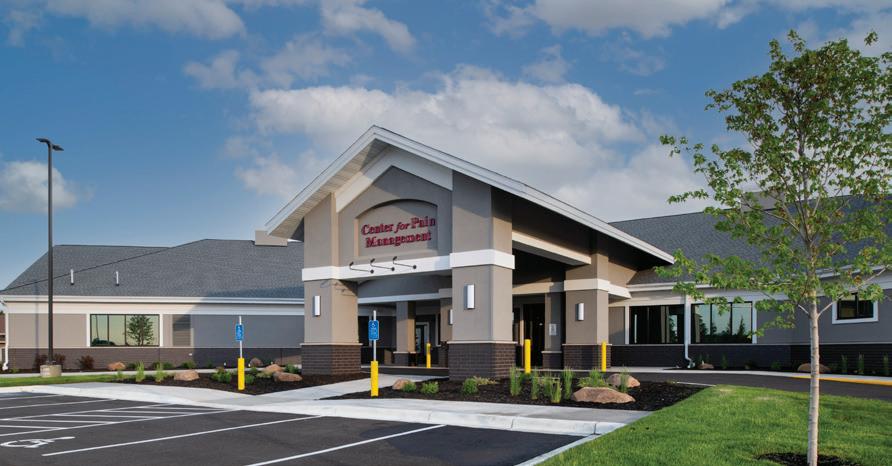




“ Working with my great team, meeting new customers, and networking with groups”

“ Helping animals, saving lives, advocating for those that can’t advocate for themselves … and puppies.”



“ Improving the community that I grew up in and live in now.”
“ Interacting with people - learning about who I am talking to and what drives them.”




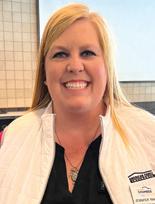



“ Helping other people achieve their goals.”

St. Cloud State clinic and services earn accreditation
St. Cloud State University’s Medical Clinic and Counseling and Psychological Services have been accredited by the American Association for Ambulatory Health Care. This is a distinction that only 11 percent of higher education medical clinics achieve. The accreditation means that SCSU has met nationally recognized standards for providing high-quality health care set by the AAAHC.
Lane joins Kensington Bank
Leslie Lane has joined Kensington Bank as treasury management & business development officer. L eslie has over a decade of experience providing customer service in the financial industry and will help customers with tailor-made cash-flow management products and services.

Mohamad Farah, community development coordinator at Stearns Bank N.A. was recently appointed to the MN Emerging Entrepreneur Board by the governor. The board works to reduce disparities in small business ownership by people in minority groups, diversify the Minnesota economy, and help shape the Minnesota Department of Employment and Economic Development programming.
The Boys and Girls Clubs of Central Minnesota was awarded a $15,000 grant by Xcel Energy. The donation will go toward Academic Success programs and STEM programming.
YOUR VOICE IN
Top legislative priorities for Minnesota businesses in 2023 highlight taxes, workforce, and environmental regulations.

• Use Minnesota Chamber Foundation research to align the state’s K-12 and workforce development systems by focusing workforce boards and resources on highest needs/highest return-oninvestment programs.
• Increase career pathways and experiential learning in middle and high school through career counselors and more integrated youth career programs.
Minnesota Chamber of Commerce has released what it calls the Bold Agenda for its 2023 legislative priorities. The economy, workforce, and environmental regulations top the list, with bold initiatives for each priority. These are issues that face businesses of all kinds. As the voice of business in Central Minnesota, the St. Cloud Area Chamber’s Board of Directors believe aligning with the Minnesota Chamber on these issues is critical for the regional business community.
• Create a competitive tax climate by reducing individual and corporate tax rates to improve business and talent attraction and retention.
• Improve the affordability of housing and childcare.
• Reduce Minnesota resident migration to other states and increase population growth.
• Accelerate the certification and training requirements for key industries (e.g. commercial drivers licenses, manufacturing and technology).
• Broaden Minnesota’s licensing and certification to increase the supply of qualified workers (nurse licensure; immigrants; 15–18-year-old youth employment; construction, manufacturing, child care workforce).
• Offer an automation incentive or credit to companies that are able to automate part of their processes and reallocate employees to other areas of the business.
• Increase the supply of childcare providers by reducing the number of regulatory barriers.
• Evaluate and audit workforce spending programs in terms of effectiveness.
• Improve Minnesota’s high school career and technical education and technology training.
• Explore a “green tier” model that rewards businesses that exceed environmental standards and regulations, such as minimizing their impact on natural resources, replacing wetlands, or voluntarily reducing other environmental impacts.
• Improve the permitting process by shortening wait times and allowing more flexibility in permitting requirements.
• Examine and compare permitting practices in other states and by industry sectors to determine the economic impact of lost business location and expansion opportunities in Minnesota due to environmental regulations and permitting procedures.
These elected officials are working for you.
District 13
Jeff Howe 651-296-2084 sen.jeff.howe @senate.mn

District 14 Aric Putnam 651-296-6455 sen.aric.putnam @senate.mn
District 13A Minority Leader
Lisa Demuth 651-296-4373 rep.lisa.demuth @house.mn
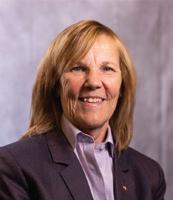
District 13B Tim O’Driscoll 651-296-7808 rep.tim.odriscoll @house.mn

District 14A Bernie Perryman 320-292-5960 bernie.perryman @gmail.com
District 14B Assistant Majority Leader



Dan Wolgamott 651-296-6612 rep.dan.wolgamott @house.mn
Senator Amy Klobuchar (202) 224-3244 info@amy klobuchar.com

Senator Tina Smith (202) 224-5641 info@tinafor minnesota.com

Representative Tom Emmer District 6 202-225-2331 info@Emmerfor Congress.com


Local printer Nahan took home the Direct Printing/Direct Marketing Best in Category Award at the PRINTING United Alliance Premier PRINT Awards for the South Dakota Department of Tourism “Your Guide to Great Finds” campaign. This comes after the print company also took home six awards at the Printing Industry Midwest Stars Awards in June.
The City of St. Cloud has received a $1 million grant to fund the installation of green hydrogen and renewable natural gas demonstration projects. These technologies will reduce operating costs, keep user rates low, provide additional revenue and economic growth opportunities, reduce dependence on natural gas and high carbon fuel sources, reduce carbon dioxide emissions, and increase energy resiliency.
Rinke Noonan adds staff Rinke Noonan has hired attorney Christina Hopke. A graduate of Gustavus Adolphus College and the University of Notre Dame Law School, Hopke served as a judicial law clerk with the Supreme Court of Minnesota. Hopke will practice in the areas of employment and labor law, litigation, and real estate law.
Rinke Noonan also welcomed attorney Hannah Schacherl to the team.


Schacherl earned her bachelor’s degree from the University of Minnesota and her law degree from the University of Minnesota Law School. Prior to joining Rinke Noonan, she was a legal intern with the Minnesota governor’s office. She will practice agricultural, environmental and government law.
Stearns Manufacturing Company generates economic waves.
By Steve PenickStearns Manufacturing Company reinvented itself on several occasions, becoming what the St. Cloud Times called “the world’s largest manufacturer of water safety products.” However, the company’s beginning could not have been further from wet suits, life preservers, and flotation devices.
In the early 1940s, Waite Park-based business partners Maurice O’Link and Howard Flanagan manufactured vehicle frost shields that protected windows from icing during the winter. Within a few years, Stearns Manufacturing Company tripled production through the challenging World War II period and moved its operation to Division Street and 30th Ave. in St. Cloud. Its market base

was the Upper Midwest, but car dealerships from Maine, California, Alaska, and even Canada purchased its products.
The auto industry improved vehicle defrosting capabilities by the 1960s which reduced the need for Stearns’ shields, and its business model needed to adapt. To fill the gap, Stearns
Joseph Smuda (L) and Robert Schmitt working on frost shields, St. Cloud, 1946

transitioned into outdoor recreation gear and plastics by manufacturing sleeping bags, boat seats, parkas, and jackets.
Success inspired innovation, and the firm took a radical step into designing life preservers. Its products were required to pass rigorous tests for U.S. Coast Guard approval, which would ensure the safety of the user and ultimately increase sales.
The task was a challenging one. President Maurice O’Link visited Washington, D.C., in 1967 to state Stearns’ case, testifying at the House Committee on Government Operations. The company advocated for flexibility in design standards while stressing comfort and
practicality. The public, O’Link claimed, complained about the cumbersome fit of the standard approved vests. Four years later, Congress passed the Federal Boat Safety Act, which allowed private manufacturers some latitude in their designs. This opened the door for Stearns to further plan, test, and develop prototypes.
“Up until that point, you ordered a blueprint from the Coast Guard,” commented Karla Evert, a Stearns Manufacturing vice president in a St. Cloud Times article. “I think the idea — and the idea of the whole company — was to make something that was used instead of thrown on the floor of the boat,” added Kim Elverum from
the Minnesota Department of Natural Resources. “If you can make flotation devices attractive, if you put some pockets in them that the fisherman use, then they’ll wear them.” Stearns’ models also incorporated trendy colors and wavy patterns.
In 1973 manufacturing began. By this time, the plant had moved across the Mississippi River to Sauk Rapids, bringing with it several hundred employees. Stearns also had other production facilities over the years in Paynesville, Grey Eagle, and Carlton.

Product sales were strong, and by the early 1980s Stearns had captured 30 percent of the world market. The estimated


$20 million company had some major clients including the U.S. Navy, oil companies, and coastal harbor patrols. Stearns’ industrial division sold survival garments for ocean fishing and freighter crews. Heavy-duty outerwear was not limited to commercial use – a range of high-quality styles made Stearns gear popular with the public as well.
This success became difficult to sustain as both internal and external influences altered how Stearns did business. The strain of retaining its global market share became more challenging with the death of founder Maurice O’Link in 1983, along with shifting market forces. So, it came as little surprise when in October 1988 Anthony
Industries, a California company specializing in recreational products, bought it. Stearns Manufacturing continued to experience a series of corporate buyouts, and employee layoffs. In 2008 the Coleman Company, owned by Newell Brands, purchased the business. In 2021 Newell Brands announced that it would permanently close the Sauk Rapids facility — once the No. 1 producer of personal flotation devices — at the end of the year.
Steve Penick is the head archivist at the Stearns History Museum in St. Cloud.

InteleCONNECT adds staff

Ben Thoele has joined InteleCONNECT in a new role as solutions engineer. Thoele brings 20 years of experience in information technology and business operations with experience working in legal, insurance, banking, manufacturing, and construction.

Got News?
Send news releases, announcements, or anything you think is newsworthy to Emily, ebertram@stcloudareachamber.com, and we will try to include it in Business Central.

DO IT NOW!
Is your email inbox stressing you out? These tips can help you stay organized and productive.

How many emails do you get in a day? 50? 100? 300? More? Keeping up on your inbox(es) can be a daunting task and things can sometimes get missed among the throngs of incoming messages. Staying organized and prioritizing can help ease the stress of an overflowing inbox.
Implement a daily routine Start a routine of checking your email at the same time or times every day, like right away in the morning, and again in the afternoon before you leave for the day. Set a calendar reminder, go through your inbox and do what you need to do,
The key to a healthy inbox is to not stress about it. We are all busy – everybody always seems to need something.
and then don’t stress about it too much afterward.
As you go through your incoming messages, keep in mind the STAR system, which categorizes messages and what to do with them.
Store it for future reference: Inbox folders can come in handy when you have a piece of information that you might need later but can’t deal with right now. Store that message!
Trash it: Deleting unnecessary emails can clear up the clutter and leave your inbox with only messages that matter. Plus, don’t forget that there’s an unsubscribe button if you’ve had enough.
Assign it to someone: Email is a great tool for task designation. Forward, CC, or pass along messages to the right person for the job.
Respond to it: Some emails do require a prompt response or include a simple question that you can quickly answer. Take care of those as your schedule allows.
To quote an article from Inc.com, “Friends don’t let friends send anything to work email addresses.” Use a personal email address through a free provider for personal matters, such as your kid’s gymnastics class
registration or emails from your relatives, and keep your professional email just that – strictly professional. It is also not a bad idea to create a third email account strictly for social media, subscription services, newsletters, etc., of a personal nature so that your inbox is not inundated with too much clutter.
Most email providers come with email organization tools, it’s just a matter of implementing a system. Use categories or labels to classify emails that correspond to certain areas of your job. Flag or star emails that you can’t get to right now, but plan to answer. Create rules to automatically put emails from certain senders or containing certain words to a specific folder.
Pro tip: Create a rule that places any email with the word “Unsubscribe” in it into a special folder for newsletters, since most have that in the fine print. Check your folders and flags during your allotted organizing time to stay on top of everything.
The key to a healthy inbox is to not stress about it. We are all busy – everybody always seems to need something, so don’t obsess over your email inbox. Answer emails when it suits your schedule. If somebody needs something from you urgently, they will find another way to reach you – so let go of that email-checking guilt! —EB

JLG Architects won three of five awards from the American Institute of Architects (AIA) at the Annual Convention of the North Dakota Chapter. These included an Honor Award for White Bear Lake Sports Center, a Merit Award for the Grand Forks Cities Area Transit Center, and a Merit Award for Dakota State University Cyber Lab. In 2022, JLG earned a total of five AIA awards.
The U.S. Small Business Administration’s (SBA) Minnesota District has recognized Magnifi Financial as the top SBA Minnesota Credit Union!
Magnifi Financial is proud to be recognized as a top SBA-lending financial institution for 6 out of the last 7 years. Our friendly and knowledgeable team helps businesses of all sizes to qualify and get funded with an SBA loan quickly and efficiently.

Our team is committed to providing exceptional SBA lending service to businesses within our communities and beyond.

For well over a year, inflation has hindered American and global businesses. A recent U.S. Chamber of Commerce survey revealed that nearly 90 percent of small businesses surveyed expressed concern about inflation, and one-third listed it as their top concern. With no quick end in sight, business owners should prepare for inflation, understand how it affects a small business, and discover creative ways to manage it.
In essence, inflation occurs when the cost of goods and services increases rapidly, or prices rise as a currency’s purchasing power over time declines. It can be triggered by a shortage of products or excessive
government spending and results in rising costs, short supply, and long wait times.
Even top economic thinkers struggled to forecast the economic machinations of the past few years. As the economy has slowly rebounded from the COVID-19 pandemic, leadership within various Minnesota companies have been faced with the rising costs associated with inflation, a looming threat of recession, political turmoil, and continued supply chain issues.
Kevin Johnson, owner of K. Johnson Construction in Sauk Rapids, says inflationary price increases have been challenging. “Our suppliers will quote projects but are unable to
hold price guarantees for more than 10-15 days,” Johnson, who founded the company 35 years ago, explained. “If we are already under contract with projects and have a price increase, we are not able to increase our costs, so we end up eating the upcharge.”
Dennis Host, vice president of marketing and communications for Coborn’s, said the company is working diligently to keep prices on the shelf down for consumers, even though many upcharges happen before products ever reach the store. “Grocery prices have increased significantly thanks to many factors including continued price increases on packaging materials, labor shortages, transportation challenges, wage pressures, fuel increases, shortages of raw ingredients, food manufacturing plant closures, supply chain issues due to the war in Ukraine and on and on,” Host said in late October. “All those cost challenges aggregate and ultimately get passed down to the very last link in the supply chain, the grocery operator – a business with razor-thin operating margins, even on our best days.”

John Waletzko is president of Bradbury Stamm Construction. Based in Central Minnesota, he’s been with the company a decade overall and has run the upper Midwest region, with its 25 employees, for the past year.
Early procurement scenarios and “value engineering” with clients have been a focus, according to Waletzko. “By no means have we been spared supply chain woes or inflation – we’ve most definitely been tagged with both,” he explained. “The biggest things we’ve been able to do are early procurement methods. One of the biggest issues is being pigeonholed into certain supplies because of their lead time. We’ve pushed and doubled down so that when we bid on these projects, we can talk to the widest array of suppliers to gauge availability and still have a competitive bid process.”
Johnson noted a similar tactic in his industry, but one that eats up cash flow. “Our solution is to pre-buy materials that have been volatile,” Johnson said. “We have also been pre-buying supplies and products that have long lead times.”
Coborn’s is also taking a creative approach. “We are doing our best to stabilize prices and bring our guests more value and deals to save them money,” Host said. “We’re working very hard to press manufacturers and vendors for better deals.”
Coborn’s has also beefed up its coupon programs. They brought back the “Penny Pincher” promotion, added more digital coupon offers, more Price Cut tags on items in the store, and more MORE Fuel Rewards items to help customers save on
both food and fuel. “In addition, we continue to add many new items to the new “Always Save” brand,” Host added, “as well as our other store brands that are all high-quality value brands that can save the consumer money.”
Tim Stewart, Kensington Bank in St. Cloud, recommends talking to your local bank for advice on


how to best manage cash flow by implementing tailor-made strategies.

Examples include: Implement a purchasing credit card for inventory and vendor management.
Build 25-30 days into the payable cycle.

Establish payment automation to increase efficiency and the amount of time it takes to transfer money.
Determine what debt to pay down, or pay off, during a rising rate environment. It may benefit a business to keep debt on the books at a lower rate and build a cushion of liquidity for upcoming expenditures, rather than borrowing at a higher rate.
“There are numerous tactics that may appear small on the surface, yet once implemented, they move the needle enough to combat expenses, while inflation and rates continue to climb,” Stewart said. He added that
there isn’t one thing that will work for every business, which is why a hands-on approach with a financial institution, that really understands the day-to-day of its business clients, is important.
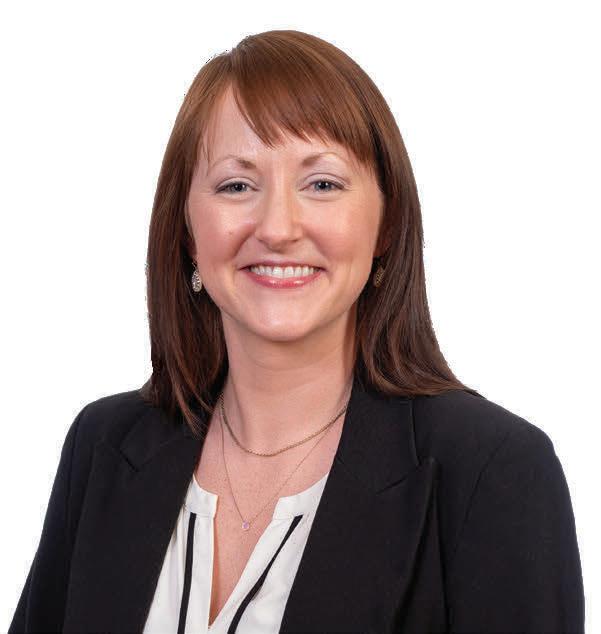
Stewart did say it’s not all doom and gloom, since both consumers and businesses are coming off an “extended period of saving funds.” Perhaps that’s the silver lining businesses and customers need to keep in mind.
A former schoolteacher and historian, Ari Kaufman has worked as a journalist in various roles since 2006. He has published articles in a dozen newspapers and written three books.
“There are numerous tactics that may appear small on the surface, yet once implemented, they move the needle enough to combat expenses, while inflation and rates continue to climb.”JEAN MASSMANN, CPA BerganKDV, Ltd. STEVEN LEEN, CPA, CGMA BerganKDV, Ltd.
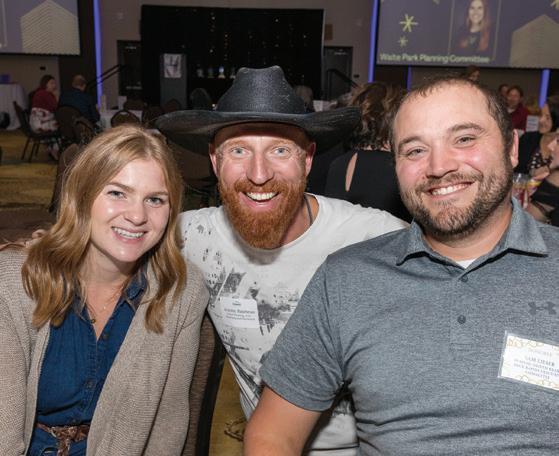
MORE ON EVENTS: For information on these or other business events, call 320-251-2940 or visit StCloudAreaChamber.com and click on “Calendar.”



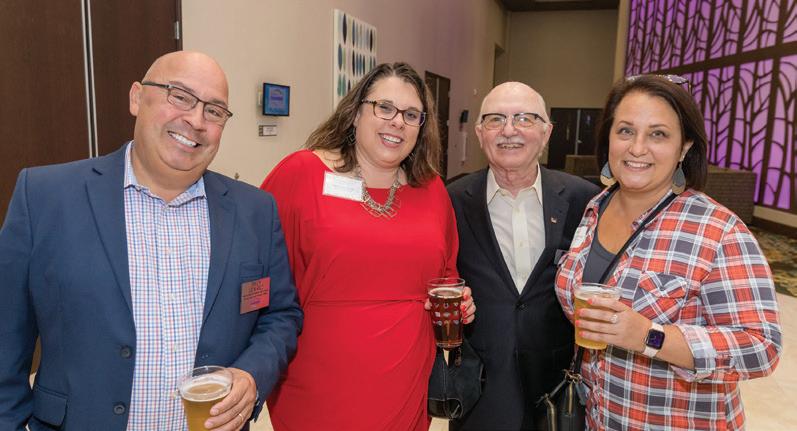


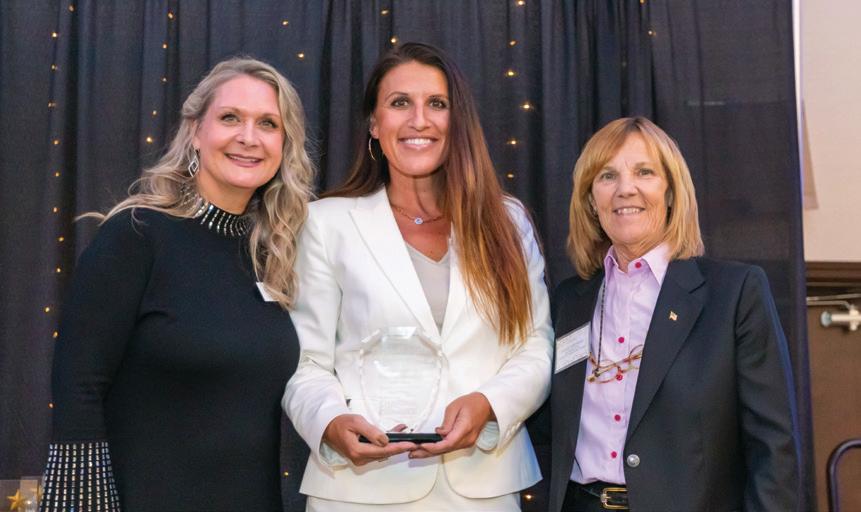





CINDY BATTLESON
Rapids Alterations & Repair
(320) 255-9083
Co-Chair, Central Minnesota Farm Show Committee
FRANK IMHOLTE
Black Diamond Auctions (320) 241-1200
Co-Chair, Central Minnesota Farm Show Committee


The Central Minnesota Farm Show, brought to you by the St. Cloud Area Chamber of Commerce, is the largest indoor show of its kind in the region. Why does such a show exist in this growing metropolitan area? Because agriculture is still one of the area’s leading industries! The St. Cloud Metropolitan Statistical Area (MSA) has 1.5 as many people working in farming as other regions.
Since opening its doors 50+ years ago, the Farm Show has been a popular community event for Central Minnesota. The show offers something for everyone with an interest in agriculture. When you turn to the center of this program you’ll find a complete map of the show and a list of vendors to help you make the most of your visit.
The St. Cloud Area Chamber of Commerce is committed to helping area farmers through organization and sponsorship of the Central Minnesota Farm Show. And there’s something else we’d like you to know. As part of our commitment to agriculture and education, each year the Chamber dedicates a portion of the proceeds from the Farm Show to student scholarships.
LAURA WAGNER
St. Cloud Area Chamber of Commerce (320) 656-3831


2023 Farm Show Coordinator
Volunteers have worked hard to put together a show that you will find both valuable and fun. Enjoy your visit with us and if you have questions or suggestions, please stop by the information booth. We’d like to hear from you.
Sincerely, Cindy Battleson, Frank Imholte & Laura Wagner
Many thanks to the following Champion and Advocate Sponsors:
KEITH OLANDER
Executive Director of AgCentric Agcentric.org
Keith Olander is the Executive Director of AgCentric, (a MN State Agricultural Center of Excellence). He also oversees strategic agricultural partnerships at Central Lakes College as a Dean of Agricultural Studies. As Executive Director of AgCentric, Keith’s major responsibilities are to augment the capacity and enrollment in comprehensive agricultural education from K-12, through postsecondary to industry. Workforce development includes building partnerships, developing seamless educational pathways, and informing audiences of the agricultural web that surrounds every person who enjoys a good meal and an environment that is sustainable.
BETHANY CROSS
Attorney, Rinke Noonan rinkenoonan.com
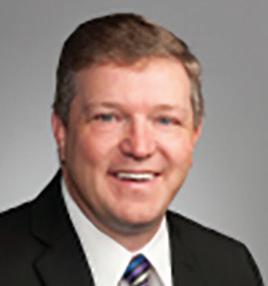
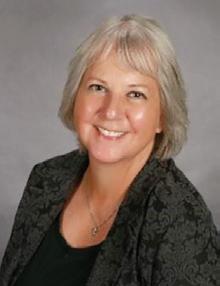
A native of Bancroft, Iowa, Bethany Cross graduated with a degree in legal studies. She obtained her law degree from Mitchell Hamline College of Law, where she was on the Dean’s List and the recipient of the Wendy Watson Scholarship and the Warren A. Morrow Scholarship. Prior to joining Rinke Noonan, Bethany’s experience included eight years as a paralegal for a renewable energy contractor. It is equally important for her to teach her children the value of teamwork, problem solving, and collaboration. These simple life lessons have shaped Bethany’s legal practice. The most basic life lessons can assist in the most complex legal transactions.


Careers in agriculture are steeped in misunderstanding when it comes to the exact responsibilities of the job. It isn’t just feeding the livestock and harvesting the crops – this is a fast-paced, innovative, and diverse industry. As we look to the future, the ag leaders of tomorrow are being grown today.
A student with an interest in technology could find success as a programmer for GPS-based precision farming. Someone with a passion for engineering could focus on the efficiency of machinery, pollution and environmental issues or power supply challenges. Those with a focus in biological sciences could thrive in the study of invasive species, plant pathology, entomology and genetics – all of which relate to crop and livestock health. The innovative career opportunities are endless.


The St. Cloud Area Chamber is committed to doing our small part to help educate students on the
possibilities that come with a career in agriculture. Each year we dedicate some of the proceeds from the Central Minn. Farm Show to student scholarships. Since 1998 we have funded $92,000 in scholarships.
In 2022 we awarded six $1,000 scholarships. The recipients were:
Evan Gillham, Milaca High School
Cora Huhn, Litchfield High School
Wesley Siira, Brandon-Evansville High School
Dana Struffert, Foley High School
Adrienne Lipinski, South Dakota State University
Megan Ratka, University of Minnesota-Twin Cities
The gross income from sales of crops in 2021 was $240 billion dollars. So what goes into that total? These are the percentages of market share of top crops in 2021:
Corn: 29.6% Soybeans: 20.5% Fruits & Nuts: 12.6% All other crops: 18.1%
Vegetables & Melons: 7.4% Wheat: 5% Cotton: 3.2% Hay: 3.6% Source: USDA.gov

Again this year, there will be scholarships awarded to both high school and college students. Businesses that are interested in supporting our agricultural scholarship program are encouraged to donate to the fund. The Chamber of Commerce is committed to offering the Central MN Farm Show Agriculture Scholarships to support students who explore fields of study and careers in the agri-industry. For more information, or to apply for a scholarship, visit CentralMNFarmShow.com.
Application deadline is February 1, 2023.

Many thanks to the following sponsors of the Central Minnesota Farm Show:
CHAMPION SPONSORS Runnings; Steffes Group
ADVOCATE SPONSOR Stearns Electric Association
PARTNER SPONSORS Advantage 1 Insurance Agency, CentraCare, Mimbach Fleet Supply
SPECIALTY SPONSORS
AgDirect, Arnzen Construction/St. Rosa Lumber, Benton County Corn Growers, Cornerstone Ag Services Inc., Elevated Ag Solutions, Farm Bureau Financial Services - Adam Tabberson, First National Bank of Milaca, Roth RV










Sponsors are listed in bold in the Exhibitor List.
A
Adam TabbersonFarm Bureau Financial Services
Ag Tech Drainage LLC
Agroecopower
Aldrich Tractor Inc

Alloy Insurance American Door Works
American Family Insurance - Peichel & Associates Inc. American Pressure AMPI
Anez Consulting Inc. Arnold’s of St. Cloud Arnzen Construction Inc.
B
Beaudry Oil & Propane
Beck’s Hybrids
Belgrade Cooperative Benton County American Dairy Association
Big Gain Inc Big Iron Bongards Creameries
Boss Supply of Janesville Inc.
Byron Seeds LLC
C
Centra Sota Cooperative Compeer Financial Complete Grain Systems Costco Wholesale
Cutco - Jill Sieben
Country Acres/ Benton Ag
D
Dairy Farmers of America
Dairyland Supply
DM Concrete Grooving
DODA
E
EASYFIX USA
Elevated Ag Solutions Everlast Industries
F Farm-Rite Equipment Inc. & Midsota Manufacturing Inc. Farmers & Merchant State Bank Feed Stuff Bagging
LeafFilter Gutter Protection Leedstone Inc.
Legend Seeds Inc. LG Seeds Lifestyle Lumber
M
Magnifi Financial Martin Till
Minnesota Agricultural Water Quality Certification Program Mustang Seeds
N
NAPA Auto Parts Nelson Agri Structures Northland Buildings Inc.
Renk Seed
G
Gilman Co-op Creamery Gold Country Seed Green Energy Products
H Hanson Silo Company Huls Bros. Trucking Inc.
I Isaacson Sales & Service
J
Jordan Ag Supply
L Lake Henry Implement Inc.
Leaf Home Water Solutions
O
O’Reilly Auto Parts Osakis Silo Repair
P
Passion Ag
PowerLift Doors by French Manufacturing Inc. Prairie Ag Products
Princeton Agencies Inc.
PSI Powerwashers Inc.
Puck Enterprises
R
RAM Buildings
RDO Equipment Co.
Real-Tuff Inc.
Rejuv Medical Renewal by Andersen
Roth RV Royalton Lumber
S
Saddle Butte Ag Inc. Schaeffer Manufacturing Stang Custom Farming Stearns Bank N.A. Stearns History Museum
Steffes Group
T
The LAND
Tri County Foam Insulation & Concrete Lifting
U UCare Ultimate Ag
Z
Ziegler Ag Equipment

Presentation will focus on the genesis of the carbon markets. It will take a journey to where it began and the impact of ESG on agriculture. Several embedded topics are carbon market exchanges, USDA Climate Smart Programs, and some of the resulting geopolitics.
Estate Planning and How to Effectively Implement It // 1 pm
Panel of professionals including Keith Olander with AgCentric-Minnesota State Farm Business Management; Bethany Cross with Rinke Noonan; and Mike Grage with Schlenner Wenner
Best practices in estate planning from the perspective of a financial planner, attorney, and CPA.


10 am Andrew Geil, Compeer Financial
Agricultural operations face threats and challenges everyday. Weather, markets, costs and supply chain issues challenge agri-businesses. But what happens when cyber criminals get involved in any one of those processes? This presentation will review the current landscape of cyber risks, and more importantly, how to protect your operation.
Grant & Dawn Breikreutz, owners of Stoney Creek Farms and 2016 Environmental Stewardship Award winners
Presenters and topics are subject to change. For the most current information visit CentralMNFarmShow.com









Which is better, traditional or digital marketing? It depends on your message.
By Dan SoldnerIam asked this a lot: If you had to pick between traditional or digital marketing, which is better? My response is always the same: it depends on your message.
Instead of pitting digital and traditional media against each other, I challenge businesses to start with empathy. Gain a deep understanding of your buyer, then create a clear and compelling message that aligns with their journey to your product or service. Here’s how you do that:
Creating a customer-centric message starts with knowing your customer. It might sound easy, but getting it right takes a lot of intention.
There are many popular ways to organize customer data and you can find helpful worksheets with a simple online search to help you get started. What’s most important is the collection method. Borrow the tactics of an anthropologist and closely study the behaviors, language, habits, fears, perspectives, and
emotions of your buyer. They’re human. They’re complex. As Stephen Covey said, “Seek first to understand.”
Listen closely. Shadow a salesperson making calls, ride along on a service call, listen to support ticket resolutions, or grab a cubicle and absorb the culture for a day. Maybe even conduct a few interviews with customers, past customers, and stakeholders. Map what you learn to stages in the buyer’s journey, tracking how customers go from unaware to aware, then to consideration and decision.
What you’ve gathered through these experiences is data to inform a messaging strategy. And not just any strategy — a strategy rooted in emotions and empathy that has your buyer as the hero of every story you tell. This is what will outperform what I like to call “random acts of marketing.”
Put your customer at the center of your story

Not sure how to transition your data into meaningful words that sell? It can be helpful to use a messaging framework like the StoryBrand 7 framework described in the book Building a Story Brand by author Donald Miller. This framework sets
up your clear and compelling message using what Hollywood producers and best-selling authors have used for ages to keep you glued to a story. The framework positions your buyer as the hero character and your brand as the guide that gives them a plan, calls them to action, and solves their problem, resulting in success or avoiding failure.
So, back to the question: Which is better?
Let’s think back to the traditional vs. digital media debate. Once you’ve completed the work of using empathy to more deeply understand why your buyer buys — and craft a customercentric message — it becomes obvious where that messaging should be published, distributed, advertised, and shared.
The challenge for any company, especially small and medium-sized organizations, is to spend your time and money first on messaging, then on a thoughtful plan of tactics before you jump into execution itself. The channel or platform is not nearly as important as the message. And with time, you’ll find that choosing between traditional or digital becomes somewhat irrelevant.


Women are one of the fastest growing sectors of agricultural producers in the United States, with more than half of U.S. farms having at least one female producer. Female producers are slightly younger than male producers, and more likely to be a beginner farmer, according to the USDA National Agricultural Statistics Service and Census of Agriculture conducted in 2017. The extent of their impact has only just begun. 36%



At W. Gohman, we have been creating environments where people work, play, and learn for more than 70 years. From renovation and historic rehabs to large and technically complex projects, our mission is the same: to create beautiful, functional gathering places that bring the community together. Because it’s not just a fire station. It’s our future.





Empowering your employees to give back means everyone wins in the end
Incentivize
Offer simple but meaningful incentives for donating.
• Offer a reserved work parking spot up close.
• Give the option to dress more casually.
Make it fun Engage and connect employees through fun activities.
Host a cookout
As an employer, there are many benefits that you can offer to your employees.
Allowing employees the time to volunteer, the resources to donate, and the ability to build lasting relationships with deserving organizations and causes can be extremely impactful, and a major selling point for attracting and retaining employees.
The United Way of Central Minnesota has been served the Central Minnesota area since 1967 through coordinated volunteer opportunities and giving campaigns. It partners with nearly 70 nonprofit programs to assist with healthcare, education, financial stability, and community initiatives. One way it does so is by collaborating with local businesses to implement giving campaigns within their companies. These campaigns educate and activate employees, all while raising money for
various programs and initiatives. One of those longstanding relationships is with Jefferson Capital Systems.
“It’s a commitment to the community,” said Mark Zellmann, president of Jefferson Capital. “At some point in time, we all need help in some way. We are proud to be supportive in the communities where we have a presence.”
Jefferson Capital, along with its associates, has made charitable contributions to the United Way of Central Minnesota for over 20 consecutive years.
Chris Brixius has been the campaign coordinator for Jefferson Capital’s successful United Way fundraising campaigns for several years. Brixius noted a few different tactics that have proved effective for driving employee engagement in these campaigns.
The company purchases burgers and brats, managers cook the food and employees pay a freewill offering to the campaign for their meal.
Each department assembles a basket and displays it for a week or two during the campaign for employees to bid on, with proceeds from the sales going directly to United Way.
Show the impact
Bring in speakers from United Way and various nonprofit partner programs to educate employees on who exactly benefits from their donations. It allows employees to hear real stories and see the real impact of the dollars they’re giving — and hopefully foster lasting relationships between employees and the programs that speak to them.
Since Jefferson Capital Systems started working with the United Way in 2002, it has donated over $25,000 annually through its employee campaigns. In 2022, Jefferson Capital Systems celebrated its 20th Anniversary since the company was founded, as well as its 20 years of partnership with United Way of Central Minnesota in a very big way. In addition to the contributions made by Jefferson Capital’s associates in 2022, the company made a corporate donation of $20,000.
“Our company was founded on the ideas of listening, learning, and providing solutions for both our clients and the consumers with whom we work each and every day. The United Way does the exact same thing for the individuals and organizations that it serves in our community,” said Zellmann. “The similarity of our two organizations’ goals is one of the reasons why we, along with our associates, have made over $600,000 in contributions over the past 20 years that we
Continued on next page.
For more information on how to get involved with United Way, visit BusinessCentralMagazine.com

have been in business.”

Giving back to the community that a business operates in is important for a number of reasons. Potential employees prefer to align themselves with companies that hold beliefs similar to their own. When employers make giving easy, meaningful and fun, everybody wins. — EB


Emojis first became available in text messaging in 1997 on Japanese mobile phones, but didn’t gain worldwide popularity until the 2010s. In casual conversation they have become the norm, often taking the place of whole words or are used to emphasize certain points. But do they have a place in a professional setting? According to a survey done by Survey Monkey, the answer is split: 46 percent of professionals between the ages of 18 and 29 surveyed said emojis are work appropriate, while only 15 percent of professionals aged 45 and older think that emojis improve workplace communication. However, nearly all age groups agree that emojis should not be used in communication with prospects or customers. When in doubt, leave the winking face out.
Iremember when a local government agency informed me that its website must be ADA compliant. I nodded my head and said, “Of course,” and immediately went back to my team to discuss. Based on my limited knowledge of the Americans with Disabilities Act (ADA), I remember thinking, “How can a website be handicap accessible?”
Like many people, ADA – in my mind – meant ensuring physical accessibility, such as elevators in public places and restrooms that accommodate wheelchair users. I soon learned that this law was amended in 1998 to include web accessibility.

By definition, web accessibility, also known as digital accessibility or eAccessibility, is the inclusive practice of ensuring there are no barriers that prevent interaction with – or access to – websites on the World Wide Web by people with physical disabilities, situational disabilities, and socio-economic restrictions on bandwidth and speed.

Clear as mud, right?
The idea is that when websites are correctly designed, developed, and edited, more users have equal access to information and functionality. The needs that web accessibility aims to address are:
Visual: Visual impairments including blindness, various common types of low vision and poor eyesight, various types of color blindness.
Motor/mobility: Difficulty or inability to use the hands, including tremors, muscle slowness, loss of fine muscle control, etc., due to conditions such as Parkinson’s disease, muscular dystrophy, cerebral palsy, and stroke.
Auditory: Deafness or hearing impairments, including individuals who are hard of hearing.
Seizures: Photo epileptic seizures caused by visual strobe or flashing effects.
Cognitive and intellectual challenges: Developmental disabilities, learning difficulties and cognitive disabilities of various origins that affect memory, attention, developmental maturity, problem-solving and logic skills.
While the legislation requires all government agencies and organizations doing business with these agencies to be ADA compliant, many social-minded businesses are embracing these trends and choosing to be inclusive. The problem is that neither the ADA nor other official legislation specifies how, exactly, organizations are supposed to achieve this. In fact, according to a 2018 WebAIM global survey of web accessibility practitioners, close to 93 percent of survey respondents received
no formal schooling on web accessibility.
That leaves us in a sticky situation when it comes to designing websites, apps, and other digital products. How are we supposed to know which ones need to be accessible? What kind of accessibility standard do we hold them to?
In lieu of a clear set of government guidelines, following the World Wide Web Consortium’s (W3C) Web Accessibility Initiative remains the best option for most organizations. Its web content accessibility guidelines, known as WCAG 2.0, provide recommendations for making web content more accessible. The guidelines include three tiers of accessibility.
Level A issues are the most urgent and include problems that can severely limit a disabled visitor’s ability to navigate or use the website. Level AA issues tend to be rooted in functionality, addressing areas where improvement is needed to give disabled users the full experience of a site. Level AAA issues are the highest and include fine-tuning and expanding on issues already identified as Level A and AA. While an excellent goal, full Level AAA compliance is likely beyond the reach of most websites. Level AA is considered the target standard for most commercial websites.
Continued on next page.
You may think your business is accessible to all, but have you looked at your website lately?
If you are looking to make your website ADA compliant or, at the very least, more accessible, my recommendation is to consult a professional website development firm. In addition to avoiding accessibility lawsuits and negative publicity, providing accessible solutions for all digital users is just the right thing to do.


It wasn’t long ago that graphic designers and marketers were giving the advice to “always shoot video horizontally” to make sure it appears best on social media and video sites. Thanks to both mobile phone cameras and apps like TikTok, Instagram Reels and Snapchat, that is no longer the best practice in every case. The growing use of vertical photos and videos has forced other apps and services to look at how they deliver content as well, including Microsoft’s PowerPoint Mobile application on iOS. You can now create your slide decks in portrait orientation for better presentation on mobile devices. The functionality is being rolled out now so it might not be immediately available, and it is currently only compatible with Apple devices. Now, someone show me how to flip my monitor vertically….


Inflation’s impact on the agricultural sector has been subject to debate — and sometimes misunderstood.
producers to increase their output. But, if these higher prices result from inflation, increasing output may not generate higher profits if sales aren’t keeping pace. Further, when higher prices encourage producers to increase agricultural production, demand for agricultural inputs such as seeds, fertilizer, and farm equipment can also increase, pushing up the prices of these inputs. Thus, the expected gains from higher sales prices are often offset by increases in input costs.
Inflation has been making news as households and businesses experience the strain from rising prices. While prices for consumer goods in the U.S. have been rising, food prices have been rising by more. From September 2021 to September 2022 the Consumer Price Index (CPI) for food items saw an increase of 11.2 percent, the largest 12-month increase since 1981. This reflects an increase in prices for all categories of food purchased for home consumption as well as food consumed outside the home. In comparison, the same period showed an increase of 8.2 percent in the general price level as measured by the CPI. The CPI is commonly used to measure inflation and it reflects the average change in price of a
selection of goods and services over time. The Federal Reserve Bank suggests 2 percent as a reasonable target for inflation. Even though inflation is affecting the entire economy, the effects on the agricultural sector have been subject to debate and sometimes even misunderstood.
In agriculture, like in any other sector, inflation impacts both producers and consumers. For consumers this usually means higher prices for agricultural products, resulting in higher food bills. The effect on producers is more nuanced. During an inflationary period, producers tend to receive higher prices for their products. Higher prices are usually associated with increased profitability, encouraging
The effect of inflation is further complicated by the fact that producers and consumers may experience different inflation rates for the same item. For example, from April 2021 to April 2022, the price of eggs increased 220.1 percent at the producer level while the price of eggs increased 22.6 percent at the consumer level, according to the USDA Economic Research Service (ERS). While the price of eggs has increased for consumers and producers alike, the data indicates that in the case of eggs, producers have taken on a larger share of the price increase than consumers. This can be the result of different factors, including the amount of processing a product requires, and changes in wholesale and retail prices.
Inflation varies across items. ERS data suggests that eggs and
Laurie Robles Ramirez is an SCSU Global Studies alumnus ’21 with an MA in globalization and development, Maastricht University ’22. Lynn MacDonald, Ph.D., is an associate professor of economics at SCSU.


meat products are seeing some of the largest price increases, while price increases for cereals and bakery products are lower in comparison. The impact of these price increases on consumer purchases depends, in part, on how sensitive consumers are to these price changes. Historically, consumers tend to buy relatively the same total amount of food products, but they make substitutions in which food products they purchase in response to price changes. During the pandemic, rising food prices led consumers to make even more of these substitutions than was previously typical as they were looking for more affordable food options.
How inflation impacts the agricultural sector depends on a variety of factors including the inflation rate, demand for agricultural inputs, and consumer and producer responsiveness to price changes. The effects of inflation are complicated and varied. If we can somehow find ways to adapt our expectations to better recognize the presence of inflation, we may be able to mitigate some negative effects over time.
Editor’s Note: For more on inflation, see The Trouble with Business on page 14.
For a list of sources used in this story, visit BusinessCentralMagazine.com
BUILDING PERMITS BY COMMUNITY
Residential 2020 2021 2022 #/$ #/$ #/$ St. Cloud 765 777 509 $38,601,654 $31,498,210 $20,546,606 Sartell 560 477 861 $16,235,353 $28,930,350 $10,142,803 Sauk Rapids 236 252 941 $7,739,324 $9,116,510 $20,173,235 Waite Park 49 54 42 $2,336,431 $2,766,805 $1,063,087 St. Augusta 95 113 92 $10,023,126 $11,360,899 $10,139,831 St. Joseph 22 162 147 3,685,577 $4,529,642 $9,419,429
BUILDING PERMITS BY COMMUNITY
Commercial 2020 2021 2022 #/$ #/$ #/$
St. Cloud 246 282 238 $68,749,665 $105,238,005 $132,652,119 Sartell 309 158 161 $15,070,149 $18,230,359 $25,358,323 Sauk Rapids 8 56 59 $30,482,808 $12,310,906 $10,992,619
Waite Park 35 122 141 $5,556,423 $11,691,421 $20,281,396 St. Augusta 11 12 7 $9,754,200 $2,774,220 $239,565 St. Joseph 51 44 76 $7,919,703 $3,001,040 $8,961,300

Flexibility:
Local suppliers can respond and react much faster than those who are farther away. Quicker communication and delivery are more attainable, which improves the ability to launch products faster.
Control: When manufacturers use local suppliers, they’re able to have more face time with them to address concerns and maintain quality in the production process.
Reduce Costs:
Logistics is one of the most expensive areas of manufacturing. By sourcing locally, you can reduce shipping and storage costs significantly. Not only that, but a local, quick-turn supply chain can attract more customers and help the bottom line.
A Good Look:
Sourcing locally is a benefit to the local community for jobs and support, as well as helping the environment by reducing emissions and energy use.
Source: Thomasnet.com




For some people, the question “What do you want to be when you grow up?” is a tricky one. Not for Rhoda Paurus. “I just knew from little on that this was what I wanted to do,” Paurus said of her career in floral arts. “When I was little, I remember having some spare change and being able to walk to the flower shop and pick out a flower. I just always had an interest in it.” With over 40 years of floral experience
and a seat at the table in many industry organizations, it’s safe to say she picked the right path.
Originally from Flandreau, South Dakota, Paurus grew up in Cold Spring, Minnesota. She has fond memories of her mom always brightening up their home with flowers. “My mom never had big gardens or anything,” Paurus said with a
E. V. Campbell – Florist & Nurserymen founds the greenhouse, located at 215 3 ½ St. S, St. Cloud, MN*
Miss Jenny Campbell purchases the business

Alfred Anderson purchases the business and renames it Anderson Florist; he relocates to 514 2nd St. S.
J.A. Matteson buys the business, changes the name to St. Cloud Floral

Matteson opens a salesroom location at 19 5th Ave. S.
1904 1912 1918 1921
St. Cloud Floral salesroom moves to 612 St. Germain E.
Though Paurus loves flowers, she is not a gardener.
“I’m not an outside, dig in the dirt type of person.” – and her dad was an agriculture teacher growing up!
smile. “But she would always have –when it was seasonally appropriate – a small vase of fresh cut flowers around the house. She still does to this day.”
RHODA PAURUS, 57
Owner, St. Cloud Floral, St. Cloud, MN
Hometown: Flandreau, SD
Education: Degree in retail floristry from Hennepin Technical College

Work History: Cardell Floral in Crystal, MN, Sauk Rapids Floral, Coborn’s Central Floral in Sauk Rapids, Little Mountain Flowers in Monticello, MN
Family: Husband, Duane, and son, Matt
Hobbies: Traveling for the floral industry, shopping and dining on her trips, watching sports, her faith
new to the cities from Cold Spring and it was a big change.” She moved back to Central Minnesota in 1985 and worked at Sauk Rapids Floral for a couple who eventually sold the store.
She then worked for a time at Coborn’s when they were testing out their central floral department concept. “We purchased and designed things that went out on trucks,” Paurus said. “It was really more of a mass market part of the floral industry, rather than the retail shop style.” After working there for five years, she transitioned to a shop in Monticello that was eventually purchased by the floral chain Stems & Vines.
“Maybe it’s the creative part of me that kept me moving around to different types of businesses,” Paurus said, reflecting on her experiences working in small retail shops, mass market floral departments, and retail chain floral shops. “I did different things for each of those,” she added, noting how each experience helped shape a part of who she is – from creativity to leadership – and how she runs her business today.
When Paurus graduated from Cold Spring High School in 1984, there were only two programs in the state for floral arts – one in Brainerd and one at Hennepin Technical College, where she ended up enrolling in the one-year program for retail floristry. “You learned design and running a store. We actually had a small shop on campus, so you got used to working in the store, taking orders, things like that.”
After graduation, Paurus went to work for Cardell Floral, a small flower shop in Crystal. “It was owned by a really nice couple who took good care of me. I was

After her time at Stems & Vines, Paurus started working at St. Cloud Floral as a designer. “Paul, the owner, had hopes of me taking over management but in reality he wasn’t quite ready to give that up quite yet,” Paurus said. Paul Strommen, then the owner of St. Cloud Floral, originally took over the business in 1972 from his parents Millie and Gil Strommen, who had purchased the business in 1962. Paul and his wife Jan ran St. Cloud Floral for 37 years.
Robert G. Allison purchases the business. He moves the greenhouse to 580 St. Germain Street E and the salesroom to 9 7th Avenue N.
Salesroom moves to 508 St. Germain Street W.
Alice C. and Lucille Strachan purchase the business and move the salesroom to 510 W St. Germain Street
“Paul was a great mentor in a lot of ways,” Paurus said. “When he owned the shop, he was also very involved in the floral industry, which I think is really important. I try to give back as much as I can to our industry and upcoming people in the industry.” Paurus worked with Strommen for five years at St. Cloud Floral. As Strommen worked to transition Paurus to more of a management role, he stepped back from his own involvement and encouraged Paurus to get more engaged in the industry.
Paurus spoke highly of Strommen’s dedication to the quality of his product and his ability to build relationships. “He would go down every Monday to our suppliers to handpick our product,” she said. He wasn’t a floral designer himself, but he was really passionate about the industry and looking to the future.
Unlike Strommen, owning her own shop was not a dream for Paurus. When at a retreat with the board for the Minnesota State Florist Association, attendees were asked to write down their business dreams. Paurus was stumped. “I guess I’m a very practical person I haven’t taken the time to dream about things,” she said with a laugh.
In 2008 the recession, coupled with construction in downtown St. Cloud, strained the business. “That was when the bridge was closed and there was no foot traffic downtown. It was a really stressful time,” she said.
Then, in 2009, Strommen died unexpectedly from a heart attack at age 59. His wife offered to sell the business to Paurus. She was suddenly faced with a decision she had not really considered before. Did she want to be a business owner? “It took me about a year to decide. I didn’t think I wanted to be a business owner. I thought ‘I’ll just manage the shop,’” Paurus said. “After I bought it though, I realized it wasn’t really that different than managing.”
Paurus took over St. Cloud Floral in 2011.
A lot has changed since 2011. St. Cloud Floral had always been in downtown St. Cloud, whether across the river with an 18,000 square foot greenhouse in the early 1900s to two different locations on West Saint Germain Street. But as downtown evolved, so did the needs of St. Cloud Floral customers. “When I bought the shop, that’s when the construction was going on around us,” Paurus said, referring to the condos and the Fifth Avenue parking ramp. It became difficult for not only delivery trucks to access the store, but customers as well. “Customers didn’t hold back about the parking situation. They would say ‘I’m not parking in a ramp to come in and get a rose.’” St. Cloud Floral moved out of downtown five years ago to West Division Street. “It was a hard, but good, decision for us,” Paurus said. “But now we are more visible and we have more foot traffic.” Despite an extensive gift shop at their location, Paurus says they still struggle with getting customers to realize they carry more than just flowers. “I work really hard when I go to market at trying to find smaller companies that carry products that have a story,” said Paurus. “We also like to work with companies that fit our beliefs.”
Those beliefs are rooted in doing good and spreading joy. “I want to be able to help somebody no matter what their budget is,” said Paurus. “We have done $5 Friday for over 10 years to get flowers in the hands of people who maybe wouldn’t be able to buy them otherwise.” This good-will deal goes back to her childhood as a little girl with a handful of coins wanting to purchase a flower. She says they have several customers who come in every Friday and purchase two or three of the $5 Friday bouquets so that they can keep one for themselves and give one to someone else. “It’s as gratifying to give flowers to somebody as it is to receive them,” she said.
Beyond the Friday deal, there are occasions when there are excess flowers from an order that won’t
“ Always pay your bills on time .” – Paul
Live by the Golden Rule –Do unto others what you would have them do unto you.
1950 1956 1959 1962
John Linnemann is added to ownership; Fire burns down the greenhouse at 580 St. Germain Street E, in the early 1950s.
StrommenHelen E. Bowers and Elise E. Jansen purchase the business Jack Perrin purchases the business
Gil and Millie Strommenpurchase the business
“
It’s as gratifying to give flowers to somebody as it is to receive them. You don’t need an occasion.”
—RHODA PAURUS
get used in time. In this case, Paurus takes pleasure in donating them to local nonprofit organizations. Churches, religious groups, and organizations like Anna Marie’s Alliance and Terebinth Refuge are often the benefactors of those occasions. “If we have extra that we can’t sell we try to share it with people,” Paurus said.
Ordering the right number and type of flowers is an art form in itself, and many times Paurus is ordering from not only wholesalers, but directly from flower farms around the world. “There are a few suppliers in Minneapolis. Some grow flowers there and some get their flowers from all over the world,” she said. She also buys direct from farms in Ecuador and Columbia that she has built relationships with over the years. “One of my better skills is being able to buy and juggle and get the products we need from different places,” Paurus said.
She has become so good at ordering the right number that inventory seldom goes bad before she can find a home for it. She also attributes the shelf life of their floral arrangements to their robust fortifying process. After flowers are stripped and cut, they go into a solution that fortifies them and holds them at that stage. In the design room, designers fill their vases with a different solution that gives the flowers food and vitamins that allow them to bloom. They also send all flowers home with another solution to
feed the flowers. “We spend a good deal of money on the treatment of our flowers,” Paurus said, “but in turn, it’s really rare to have someone call us and say their flowers didn’t last.”
The legacy that St. Cloud Floral has in Central Minnesota is not lost on Paurus. With a history of success that stretches back 130 years, there is a lot of pressure to maintain a high level of service and an exceptional product. “The business has been around for over a hundred years, I’m not going to be the one to drop the ball!” Paurus joked. Ultimately though, the goal has always been to set their product apart from the rest. “When somebody says, ‘I can pick out the piece from St. Cloud Floral,’ that is what we have strived for, for a long time.”
It’s that exceptional, personal product that fuels Paurus’ passion. Her favorite type of arrangements to work on? “I enjoy working with grieving families on sympathy work.” The process of getting to know the family and the deceased and attempting to capture those feelings and emotions in a floral piece is something Paurus takes great pride and care in. “I get huge gratification from working with families to help them create something that is meaningful for them,” Paurus said.
Her least favorite part? “Valentine’s Day. It is what it is,” she said with a laugh. She begins placing orders and planning for the day of love several months ahead. They bring in 10-14 extra drivers for that day alone, and make over 500 deliveries during the course of the day.
St. Cloud Floral moves to 515 W St. Germain Street

Paurus starts working at St. Cloud Floral

Coming out of the pandemic and looking back, St. Cloud Floral fared all right. At a time when people couldn’t have face to face interactions, they were expressing their feelings with flowers. As the state was facing the first shutdown, Paurus penned a letter on behalf of the Floral Retailers of Minnesota asking to be deemed essential so they could remain open for deliveries, which was granted. And while demand surged, the global pandemic affected many of the suppliers with everything from staffing issues with the rose growers in Ecuador to the lack of incoming flights from supplier countries. Of the suppliers today, Paurus said, “They’re still working to get back up to pre-pandemic levels.” Plus, like the rest of the world, rising costs are an issue. “We are not safe from inflation. We paid three times what we paid for white roses last summer as we did three years ago.”
ST. CLOUD FLORAL 3333 W. Division St. Ste. 127A St. Cloud, MN 56301 (320) 251-3093 stcloudfloral.com bloom@stcloudfloral.com
Business Description: Full service floral shop offering retail, premade bouquets and arrangements as well as custom floral arrangements for funerals, weddings, and any occasion, plus a full gift shop with curated gifts and home décor.
Number of Employees: 8 full time and 2 part time employees, with seasonal drivers hired as needed Chamber Member Since 1951
talking about your preferences, who the arrangement is for, and other personal questions that allow the staff to fully customize the piece.
Paurus also prioritizes involvement in the floral industry as both a personal and a professional passion. “I chose years ago to stay knowledgeable and very involved in my industry. I try to stay educated about what’s trending and what’s happening elsewhere.”
Paurus travels several times a year to different shows and conventions, and she has recently taken on a few freelancing gigs. She credits her complete trust in her longtime staff for the ability to travel and explore the industry more. St. Cloud Floral is a member of the Society of American Florists and the South Dakota State Floral Association, where she will be presenting in the spring. “It’s a good thing I love what I do, because I’m pretty involved in it,” Paurus said.
RHODA SAYSCymbidium Orchids are Rhoda Paurus’ favorite flower

As Paurus continues to look to the future, both personally and with St. Cloud Floral, she understands that, like any industry, the landscape of floristry is everchanging. They have spent a lot of time updating the St. Cloud Floral website to be more customized with accurate portrayals of their work. All photography on their website is original, which allows customers to order pieces that look as close as possible to the photos, depending on what is in stock. “People expect their final product to look like the photos online, so we try really hard to make that possible. Online orders are about 30 percent of our business,” Paurus said. While the website has been a great tool, there is no substitute for calling in and
Paul Strommen dies unexpectedly. His wife, Jan, takes over ownership.
Rhoda Paurus purchases St. Cloud Floral
Paurus is proud of her business and her staff. “We are very fortunate that we have the business that we have. We work really hard to keep our customers happy with flowers and customer service, but it doesn’t just happen. It’s continuing to have that name, to back that product up, our customer service, and my passion and love for the industry.” From that young girl with some spare change and a dream to work with flowers one day, it’s safe to say she’s doing all right.
Emily Bertram is the editor of Business Central Magazine and Director of Marketing & Communications of the St. Cloud Area Chamber of Commerce.
St. Cloud Floral moves to its present location at 3333 W Division Street
St. Cloud Floral receives the Century Award from the Society of American Florists
“It’s our goal to make you feel good about sending flowers.”
“I just knew from little on that this was what I wanted to do”FUN FACT SPECIAL FOCUS
Take a walk through a local grocery store, clinic, or Crossroads Center, and you’ll see how diverse the St. Cloud community has become.
If you aren’t seeing the same degree of diversity among your customers and employees, you may not be fully meeting the needs of the market.
Change can be hard, but this kind of change is vital to the success and growth of your business and your community. A great place to start: Your team.
Attracting, hiring, training, developing, and retaining a diverse workforce is essential, according to Charlie Curtis, director of St. Cloud State University’s LGBT Resource Center, and Brent Bultema, CentraCare’s senior director of Talent Solutions. You cannot and should not make hiring decisions
based on skin color, culture, gender, or sexual orientation. You can, however, establish recruiting and interviewing practices that encourage a wide array of people to apply, Curtis and Bultema said.
Businesses can grow their own future workforce by engaging with and building excitement among middle school and high school students, said Pat Plamann, CPA and partner at Schlenner Wenner & Co. No matter what your business, he said, take time to show young people that “what we do is purposeful and helps make Central Minnesota a better to place to live and work and raise a family.”
As you create a more diverse team of employees, remember that you must abide by the federal laws that protect job applicants and employees against
discrimination. Laws that prohibit unfair treatment because of race, color, religion, sex (including pregnancy, gender identity, and sexual orientation), national origin, age, disability, or genetic information are enforced by The Equal Employment Opportunity Commission (eeoc.gov/employers) These laws include a requirement that you provide reasonable workplace accommodations that employees need because of religious beliefs or disability.
Having a diverse workforce “brings different ideas and experiences,” Bultema said, “making our decisions and offerings more informed, effective, and reflective of the world around us.”
You can help your employees of all colors and cultures to be aware and supportive of customers’ needs.
“CentraCare provides health care services for very diverse patient populations throughout central and southwest Minnesota,” Bultema said. “It’s critical that we not only have diversity in staff that’s reflective of our communities, but also that our staff understands and delivers culturally competent care that supports various cultures, values and norms of those we serve.”
A diverse workforce, he added, “goes a long way to improving patient trust in the health care system.”
Note that Bultema said it is important for staff to understand and deliver culturally competent services. In other words, simply having a diverse workforce isn’t enough. “We invest in training for all staff to make sure they are
providing culturally competent care so that our patients feel welcomed, respected, and heard,” Bultema said.
Curtis noted that visuals in signage and advertising are easy, relatively inexpensive investments that “can be reassuring to folks when exploring options for where to take their business.”
“It’s important to keep in mind, though, that simple visuals like pride flags or advertising can’t be the only steps taken,” Curtis said. “If LGBTQ+ folks have negative experiences with a business, those experiences can make the presence of pride flags, etc. seem performative rather than genuine.”
Curtis went on to say that support and inclusion should
include refraining from posting gendered signs on singleoccupancy bathrooms. And if you collect customer information, “avoid asking questions about gender/sex unless absolutely necessary. If you do need to collect gender information, is it possible to add a nonbinary option? If employees wear nametags, can they include pronouns? Adding pronouns to email signatures is another great option.”
Support for various population groups “is about following through on the promises you make” when trying to attract their business, Curtis said. “Attracting business is about getting people in the door and communicating that you view LGBTQ+ folks in a positive light.
If St. Cloud-area companies fail to engage with and meet the needs of the increasingly diverse consumer population, those consumers may take their dollars to the Twin Cities.
Supporting LGBTQ+ folks means that you consider their needs and concerns throughout your business, not only in marketing.”
CAL Learning Inc., an intercultural communication consulting and training company based in New York, offers these best practices for developing cultural competence and serving diverse customers: Talk with clients to learn about their values and beliefs. Expect differences, not similarities.

The more you know about your customers, the better you can meet their needs.
Seek culture-specific knowledge. Don’t lump all Asians or all Africans together, for instance. Recognize that Japanese is not the same as Chinese, and neither are the same as Korean.
Build relationships. Be aware that in Hispanic, Asian, Arab, and African cultures, relationships are
Regional increase in immigrants has more than doubled in the last decade
The number of immigrants has increased by 60.9% since 2010, more than double the statewide immigrant growth rate, in Economic Development Region 7W – which includes Benton, Sherburne, Stearns, and Wright counties.

More than 40% of immigrants (8,142 people) were from Africa, with slightly less than 25% coming from Asia. Another 22% were from Central and South America, with about 9.5% from Europe and 2.3% from Canada.
essential to conducting business, not the speed and efficiency favored by many natural-born Americans.
Kelly McDonald, author of “Crafting the Customer Experience for People Not Like You,” notes that understanding and meeting specific customer groups’ needs can be just the ticket for differentiating yourself from your competition. You can be the “go to” business for people of color and/or LGBTQ+ individuals and/ or people living with disabilities.
McDonald provides a detailed

“Customer service is 100% in your control at all times and it’s more important than ever,” McDonald writes.
Jonathan M. Tisch wrote in “Chocolates on the Pillow Aren’t Enough: Reinventing the Customer Experience” that conducting qualitative and quantitative research on your various customer groups, then developing programs to attract and satisfy their preferences, can lead to building a significant new base among previously neglected consumers.
You want to draw diverse customers to meet their needs, but you of course also want to maximize revenue.
Minority races in central Minnesota are not without buying power, even though the white population had the highest median income level. Median incomes for minority races in the region are highest for Hispanic/Latino at $69,689 annually, and Asians at $65,153, according to the Minnesota Department of Employment and Economic Development’s September 2022 Regional Profile, updated by Luke Greiner, DEED regional analyst.
A new nationwide study indicates that multicultural Americans have achieved or believe they can achieve the American dream of owning a home, being able to retire, and freedom to live in the manner they desire. That belief can translate into opportunities for businesses.
Consider this: By analyzing data from the Census Bureau’s Consumer Expenditure Survey, the global management consulting firm
McKinsey & Company found that combined spending by all Black households has increased 5 percent annually over the past two decades, outpacing spending by white households. McKinsey also noted that Black consumers are younger and more brandaware than other groups – and are three times more likely than white Americans to expect brands to align with their values and support social causes.
Is your business supporting the social causes important to your clientele? Do you have a presence at the Pride festival? Do you attend any of the annual Martin Luther King Jr. events? What about getting involved on one of the boards or committees that create awareness and advance the causes of LGBTQ+ and people of color?
If St. Cloud-area companies fail to engage with and meet the needs of the increasingly diverse consumer population, those consumers may take their dollars to the Twin Cities. In fact, national studies have indicated that people of color and LGBTQ+ people will not hesitate to travel to other cities for the goods and services they want. You can play a key role in ensuring that people who live here will stay here for everything from haircuts to health care, from dining to durable goods.
Jeanine Nistler is a St. Cloudbased freelance writer who has worked in health care, higher education, state government, and as a daily newspaper reporter and editor.

Good stewardship and making an impact are big parts of our overall mission here at WhiteBox Marketing. We often discuss our passion for inclusivity and the importance of being open listeners and honest communicators. Overall, we like to say that we are good people doing good things, going beyond what may be expected to reach a positive goal. For us, all of this culminates into one phrase: Do Good Together.

From ownership transitions to work culture shifts, Scenic Sign Corp. is used to adapting to change.
By Emily BertramBusiness Central: How’s business ownership going?
Bob Gruber Jr.: Aaron and I complement each other really well. We have completely different skillsets, I work more with people, keeping them motivated and happy, and Aaron is great with details — making sure things are working well.
Aaron Ree: It’s been a lot more responsibility going from designer to ownership, but I’ve really enjoyed the challenge.
BC: Did you always want to take over the business?
Ree: I didn’t have it locked in, but it fit my skillset. I have a graphic design degree, and I’ve always been a creative person, but I wasn’t sure where I would end up. When the time came, it just made sense.
Gruber: For me, it’s the total opposite. I’ve always wanted to work in signage. I grew up in this industry, and I love it. I’m also proud to carry on my dad’s legacy, and I’m excited now more than ever to see where we will go.
BC: What do you like best about being in this business?
Ree: I like the variety of the work. There’s always a new challenge, a new customer, a new design. I like to find solutions and be creative.
Gruber: For me it’s the people, customers and employees — our employees are unbelievable, and we have some that have been with us for a really long time. I also like that we get to see our work all of the time.
Driving down the road we can say “Hey, we did that!” We literally change the landscape, and I like sharing our work with the world.
BC: Where do you see Scenic Sign Corp. in 10 years?
Gruber: We would like to see steady growth as well as being a great place to work. As a company, employee satisfaction and retention have been major priorities and something we’ve really been working to improve on. Our employees are happier and prouder to be here than they’ve ever been, and we want to continue with that trend.
If we are empowering our employees, we are going to satisfy our customers.
Ree: Agreed. We want to have a really strong culture. One team — working together to make awesome signs.
1957 / Northern Outdoor Advertising billboard company begins operations in Pine City. Shortly after, the company rebrands as Scenic Sign and grows to five locations across the Midwest.
Early 1970s / Scenic Sign Corp. gradually shifts its business model from billboard sales to selling electric signs to businesses.
1990 / Bob Gruber Sr. and Marc Ree purchase the company and employ 11 people and two trucks. Today they have 47 employees and 13 trucks.
2009 / Fargo Scenic Sign Corp. office opens January 1, 2023 / Bob Gruber Jr. and Aaron Ree take over ownership from their fathers, Bob Gruber Sr. and Marc Ree. Marc Ree remains on the sales team.

Bob Gruber Jr.
Hometown: St. Cloud Education: St. Cloud State University
Work History: Grew up working at Scenic Sign Corp., worked for Townsquare Media after college, started full time career at Scenic Sign Corp. in 2005
Family: Wife, Katie, and three children Jack, Sam, and Belle
Hobbies: Spending time with family and friends, playing and coaching sports, and doing anything in the outdoors.
Best Advice Ever Received: “It’s important to understand the difference between a tree and the forest, don’t get caught up in the little things.”
— a saying from former Scenic Sign owners Marc Ree and Bob Gruber Sr.
Hometown: St. Cloud Education: Moorhead State University
Work History: Grew up working at Scenic Sign Corp., worked in Colorado for a few years, started full time career at Scenic Sign Corp. in 2019
Family: Wife, Brook, and son, Eddie
Scenic Sign Corp.
828 5th St. South, Sauk Rapids, MN 56379 // scenicsign.com // 320-252-9400 // Opened: 1957 // Joined the Chamber: 972 // Business Description: Scenic Sign is a full-service sign company specializing in retail, commercial, industrial, and institutional signage. They have been serving St. Cloud and surrounding communities for over 50 years. // Owners: Bob Gruber Jr. and Aaron Ree // Number of Employees: 47
Hobbies: Building and painting scale models, hunting, fishing and cooking.
Best Business Advice: “ Never half-ass a bunch of things; whole-ass one thing”. – Ron Swanson, The Office



St. Cloud Orthopedics has recently received several awards on the local, state, and national levels! THANK YOU to our community, patients, and family and friends for taking the time to recognize our staff and our dedication to providing top orthopedic specialty care for nearly 70 years. We are so fortunate to be part of this community, and for our outstanding staff and specialists! When you need orthopedic care, remember you have a choice. Choose the BEST.

